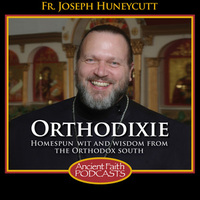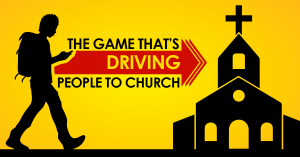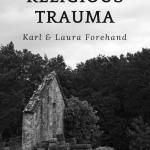“[He] dedicated his life to studying the history of the goddess, and nothing has done more to erase that history than the Catholic Church” (p.46).
 Can you say “hooey?” I thought you could.
Can you say “hooey?” I thought you could.
See previous posts Part 1, Part 2, Addendum, Part 3.
“The fleur-de-lis … the flower of Lisa … the Mona Lisa” (p.114).
 This one caught by breath. My mind went, “Really?” Having been, once upon a time, of the High Church camp as an Anglican, I was taught & believed the fleur-de-lis was a symbol of the Virgin Mary. (Then again, wasn’t everything?) Now here comes this new and strange information. And, ya gotta admit, it looks and sounds possible. Baseless, however, totally baseless. In fact, after reading this article about the mystical symbol, Brown’s claims look just plain silly.
This one caught by breath. My mind went, “Really?” Having been, once upon a time, of the High Church camp as an Anglican, I was taught & believed the fleur-de-lis was a symbol of the Virgin Mary. (Then again, wasn’t everything?) Now here comes this new and strange information. And, ya gotta admit, it looks and sounds possible. Baseless, however, totally baseless. In fact, after reading this article about the mystical symbol, Brown’s claims look just plain silly.
“The Priory believes that Constantine and his male successors successfully converted the world from matriarchal paganism to patriarchal Christianity by waging a campaign of propaganda that demonized the sacred feminine, obliterating the goddess from modern religion forever” (p.124).
However, it was a female, Constantine’s mother, Helen, who, wishing to find the Cross of Christ, destroyed a temple dedicated to the goddess, Venus, which had been built on the sacred spot by the Emperor Hadrian. (Read more here.) Otherwise, to my knowledge, there is no proof whatsoever that “matriarchal paganism” played any role, large or small, in Constantine’s actions and edicts. He did make Christianity legal with his Edict of Milan in 313. This act helped to end the centuries old slaughter of Christians, returned previously confiscated property, and allowed for freedom of worship.
“Midwives also were killed for their heretical practice of using medical knowledge to ease the pain of childbirth, that was God’s rightful punishment for Eve’s partaking of the Apple of Knowledge, thus giving birth to the idea of Original Sin. During three hundred years of witch hunts, the Church burned at the stake an astounding five million women” (p.125).
For what it’s worth, the latest figures for deaths during the European witch craze are between 30,000 to 50,000 victims. Not all were executed by the Church, not all were women, and not all were burned (no doubt, some were midwives).
That being said, there is no “heresy” in easing pain. This is not to say that midwives were not killed. Yet to accuse Christianity of opposing the easing of pain as a heresy is disingenuous. Brown continues by stating that Eve’s partaking of the apple gave birth to the idea of Original Sin. Well, I mean, transgressing the [then] only Commandment of God was certainly contrary to the will of God, n’est pas?
And the LORD God commanded the man, saying, “You may freely eat of every tree of the garden; but of the tree of the knowledge of good and evil you shall not eat, for in the day that you eat of it you shall die” (Gen.2:16-17).
Eve sinned — that is, she “missed the mark” of faithfulness. The first sin (hence, original), obviously happened with Eve and Adam. Unless you have an anti-Christian/Catholic bias — which, undoubtedly, Brown does — how can you view the record otherwise? So, as often happens in The Da Vinci Code, Brown mixes apples and oranges and assumes no one will know the difference. Greater still, the fact that what he’s serving is poison may go unnoticed especially when presented as fruit punch.
Let’s look at some of the “curses” placed on Adam & Eve after their transgression …
First and foremost: Death entered God’s creation. From that point on, we all shall die. This was foretold by God (see above).
Next, God curses the serpent and foretells a struggle (physically & figuratively)…
The LORD God said to the serpent, “Because you have done this, cursed are you above all cattle, and above all wild animals; upon your belly you shall go, and dust you shall eat all the days of your life. I will put enmity between you and the woman, and between your seed and her seed; he shall bruise your head, and you shall bruise his heel” (Gen.3:14-15).
Then …
To the woman he said, “I will greatly multiply your pain in childbearing; in pain you shall bring forth children….
Oh dear, look at the rest of the sentence …
“… yet your desire shall be for your husband, and he shall rule over you” (Gen.3:16).
Adam’s turn …
And to Adam he said, “Because you have listened to the voice of your wife, and have eaten of the tree of which I commanded you, `You shall not eat of it,’ cursed is the ground because of you; in toil you shall eat of it all the days of your life; thorns and thistles it shall bring forth to you; and you shall eat the plants of the field. In the sweat of your face you shall eat bread till you return to the ground, for out of it you were taken; you are dust, and to dust you shall return” (Gen.3:17-20).
So now Adam’s got to work. Question: Is there some prohibition against easing the pain of work? Certainly not … e.g., beasts of burden, etc. It should also be noted that Adam may have been faithful to his wife, in eating the fruit, but, in disobeying God, he sinned. This is what is prohibited (not, of course, solely listening to the voice of your wife).
The man called his wife’s name Eve, because she was the mother of all living (Gen.3:20).
Notice that Adam, a man, named his wife “Eve” — the mother of the living — AFTER she’d eaten the forbidden fruit, after they’d sinned, after the Fall. So much for Brown’s claim that:
“[The] concept of woman as life-bringer was the foundation of ancient religion. Childbirth was mystical and powerful. Sadly, Christian philosophy decided to embezzle the female’s creative power by ignoring biological truth and making man the Creator” (p.238)
“… Noah himself was an albino?” (p.187)
This snippet leaps out and flies past — presenting itself as undisputed truth. Had you ever heard of this before? Not me. (Incidentally, I used to listen to the radio for hours waiting for them to play the Edgar Winter group’s “Frankenstein” — but, I digress.) It turns out this notion of Noah being albino comes from the non-canonical book of Enoch (1 Enoch 106:2).
Throughout The Da Vinci code the message is clear: Banned Books = Good; Canonical Books = Bad. (More here.)
Next time we’ll look at the infamously loaded Chapter 55 — which is sort of like Area 54, only less factual.











